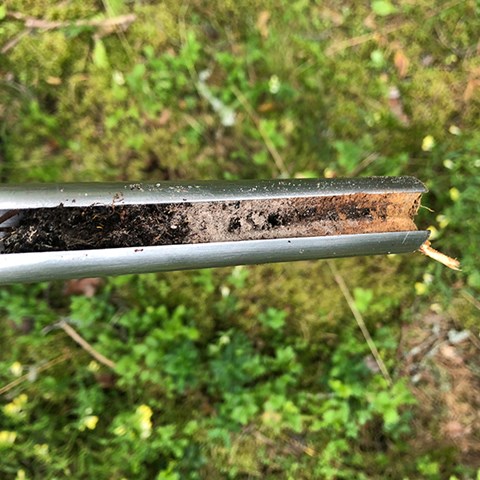How we manage forests is of great importance for the biodiversity and the ecosystem processes that the species contribute to, such as the carbon and nutrient turnover. So, what shall we do to preserve biodiversity, equip our forests for climate change and also mitigate climate change through increased carbon sequestration?
Need more information about biodiversity
In order for us to meet these challenges, knowledge about biodiversity and how the species interact in the ecosystem is crucial. We know quite a lot about how forest management affects plants, insects and birds. But soil life is still a largely unknown world - probably more than 95 percent of all microbes are still unknown to science.
This is not because what happens in the soil is less interesting or important – soil bacteria and fungi play an important role in the functioning of ecosystems. They decompose plant material and contribute to carbon dynamics. They are partners in symbiosis with trees. There are also many other interactions going on in the soil that affect the composition of species. For example, many bacteria and fungi produce substances that can adversely affect other organisms. There are also small animals in the soil, such as nematodes and mites that eat fungi and bacteria.
Analyse soil samples
In this project, the researchers will collect soil samples from forests located in different climate zones where different types of forest management have been used (thinning, nature reserves etc). They will use DNA sequencing to identify what is in the samples. Thanks to new technology, it is possible to map entire fungal or bacteria communities. By identifying genes that are important for various functions - such as decomposition – they can also find out what the fungal community may contribute to the ecosystem. The researchers will also measure, for example, decomposition and carbon sequestration by other methods.
Collaboration
When the first survey is completed the researchers will also collaborate with representatives from forestry and nature conservation on how to proceed. Which forestry methods need to be studied in more detail?
"The project is an important piece of the puzzle for predicting how global environmental change may affect future land use and the possibilities of developing methods that can mitigate the negative environmental impact from humans," says Mohammad Bahram, a researcher at the Department of Ecology and project manager.
“In addition to gaining deeper insights into the soil biodiversity, it is also of outmost importance to integrate this knowledge with forestry management practices when we look at the functioning of these ecosystems. This is key to understanding and evaluating balances and trade-offs between different functions on larger timescales”, says Tord Ranheim Sveen who is PhD student in the project.
Kontakt
Mohammad Bahram
